“Something Useful” for Mark
In March 2019, our student group began working on the final project for our introductory physical computing course: to design a build a useful device for an older person.
Not just any older person. We were assigned to work with Mark: a retired lawyer living in the South Hills with a love for videogames, baking, his wife Renée, and his huge, adorable, couch-hogging dog. We set out to build Mark something, anything, that might make his day-to-day life easier or even just provide some short-term fun. Of course, before we could design anything for him, we needed to get to know him a bit.

Mark in his home office
The Team:
- Mark: the muse
- Stefan: a second year electrical and computer engineering student
- Nina: a second year design student
- Katie: a human computer interaction masters student
The Agenda
On the afternoon Wednesday 3/27/19, we arrived at Mark’s house for our first interview. We were armed with a list of questions (most of which we never made it through) and a pen and notebook.
Mark greeted us on his front porch and led us inside to his living room table, where he told us he often spends the majority of his day. Mark is bound to an electric wheelchair, which he expertly flies around his house in, and in this moment, docks next to the table.
Our Planned Agenda
We planned for things to not go as planned. The goal of this interview was for us to get to know Mark, and for him to get to know us enough to be be comfortable talking freely with us about his thoughts, feelings, and problems.

Our planned agenda (RIP)
What Actually Happened
After we had made it through our stuffy icebreaker questions, there was a long awkward pause as we all tried to decide how to start the real conversation. Nina saved the day by noticing that Mark had a phone case printed with the logo for Hearthstone, an online card game.
Videogames and Computer Use
What followed was a very natural conversation about videogames. The great thing about this conversation was how much we were able to learn about Mark by talking to him about games. We got a rough picture of Mark’s interests, likes, dislikes, and importantly, his motor skills and physical capabilities and limitations– all in a way that felt relatively conversational. Mark explained the symptoms of his acioscapulohumeral muscular dystrophy to us in the context and what he could and couldn’t do comfortably while playing a game:
| Can | Difficult | Can’t |
| Move hand and click (+ right click) | Pick up objects | |
| Move one finger | Move objects | Use all fingers at the same time |
| Move arms | Use a keyboard (do it with one finger) | Type with two hands |
| Move thumbs | ||
| Pull objects behind wheel chair. | Push objects (use feet) |
Then we all moved over to Mark’s home office so he could show us his computer and give us a little demo of Hearthstone. At this point, Mark went into more detail about the games he watches on Twitch, and the games he would most like to play. We floated the idea of creating a customized game controller for Mark to use, but he was skeptical that it would be possible. We then headed to the kitchen to discuss some ideas for innovations that he thought would be more useful to him, and along the way he demonstrated how he controls his wheelchair for us so that we could better understand the limitations of his dexterity.
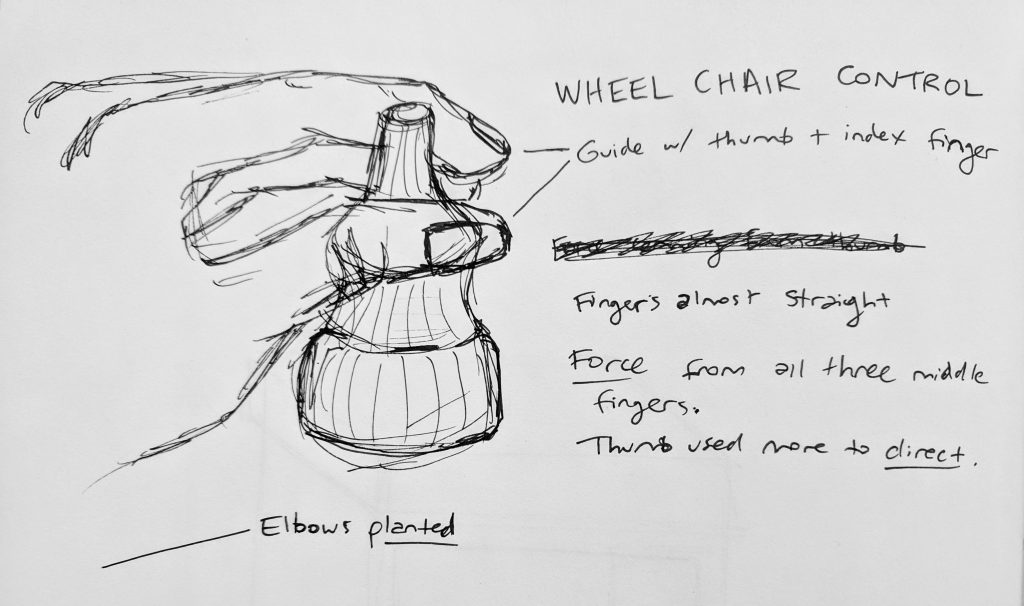
Baking and Kitchen Challenges
Mark loves to bake, and he cooks dinner for himself and Renée nearly every day. He lead us into the kitchen to demonstrate how he uses various appliances, and works on his custom wheelchair-height countertop. He told us that one of the biggest problems he has in the kitchen is that he is unable to take things out of the oven for a few reasons:
- The baking tray is too heavy for him to hold while it has anything on it
- The oven door blocks him from wheeling his chair close enough, so he has to lean forward to reach the tray, which makes it harder to lift
- The baking tray is hot, making it more difficult to transport to the counter
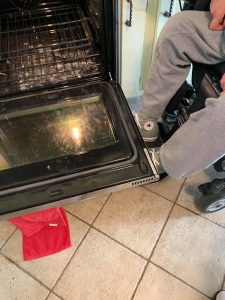
Mark next to his oven
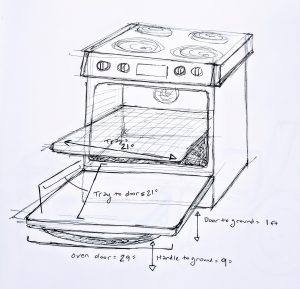
Measurements of the oven, which is an ADA compliant model
We could tell it was important to Mark to be able to cook dinner as independently impossible, and that this was an important problem to solve. We quickly got to work brainstorming how we might solve the problem, with Mark contributing ideas and feedback.

Simple sketches of our ideas for solving Mark’s problem, which we showed Mark for feedback
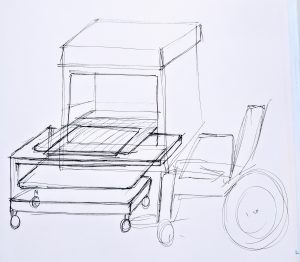
A concept sketch for the device
Reflections
In the car on the way home, we went over our notes and debated which idea to proceed with. We all agreed that the meeting had gone well, and that we had lucked out getting to work with Mark. We decided to proceed with the oven idea because Mark had indicated that he preferred this course.
The meeting was difficult to start at first, but after trying to connect with him through Hearthstone it became a lot easier because he became very interested in talking about the game to us. In retrospect, if we had to do something differently it would be to maybe ask his wife more questions on what he is interested in or wants that he may not realize.
Additional Notes
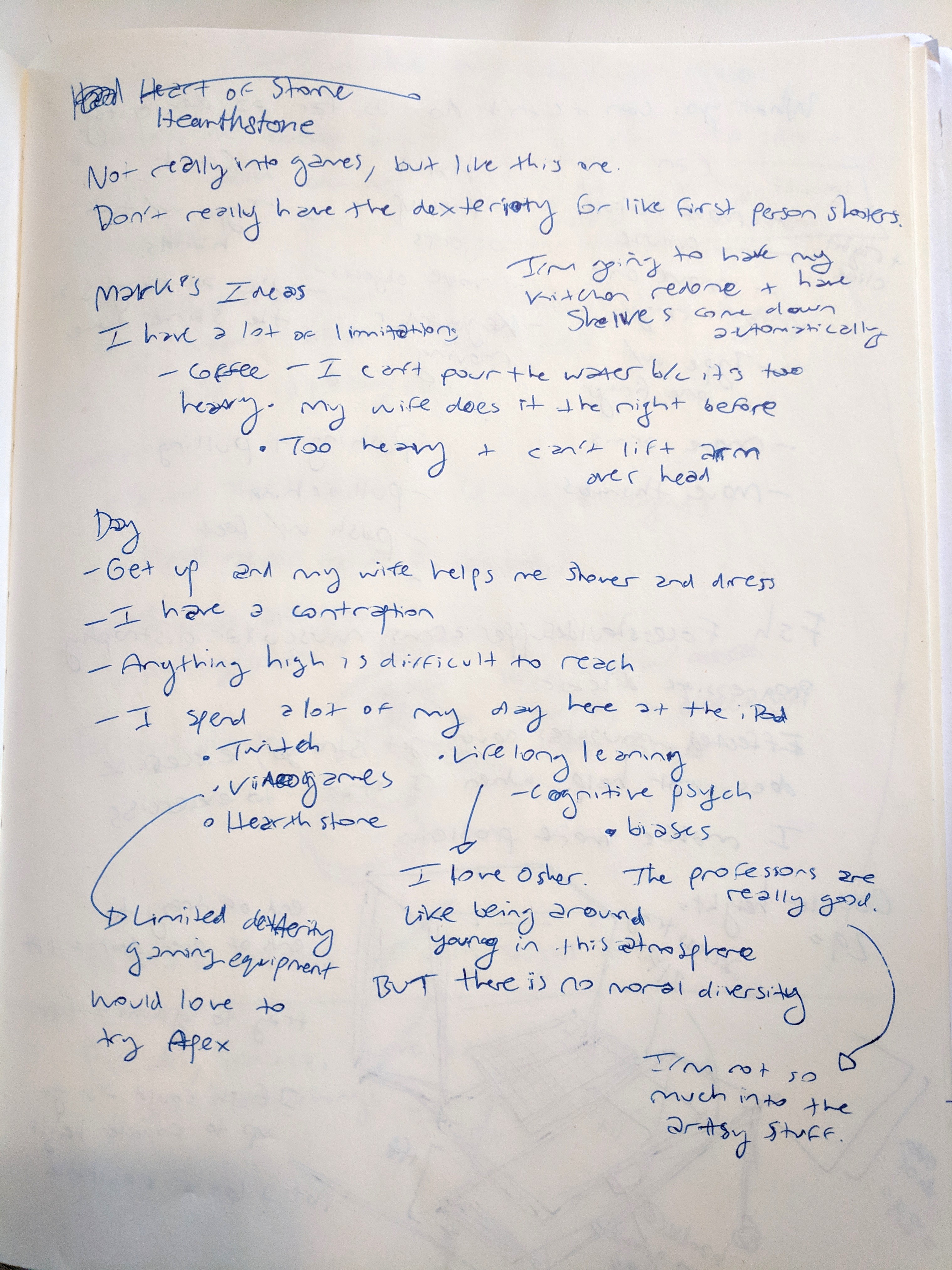
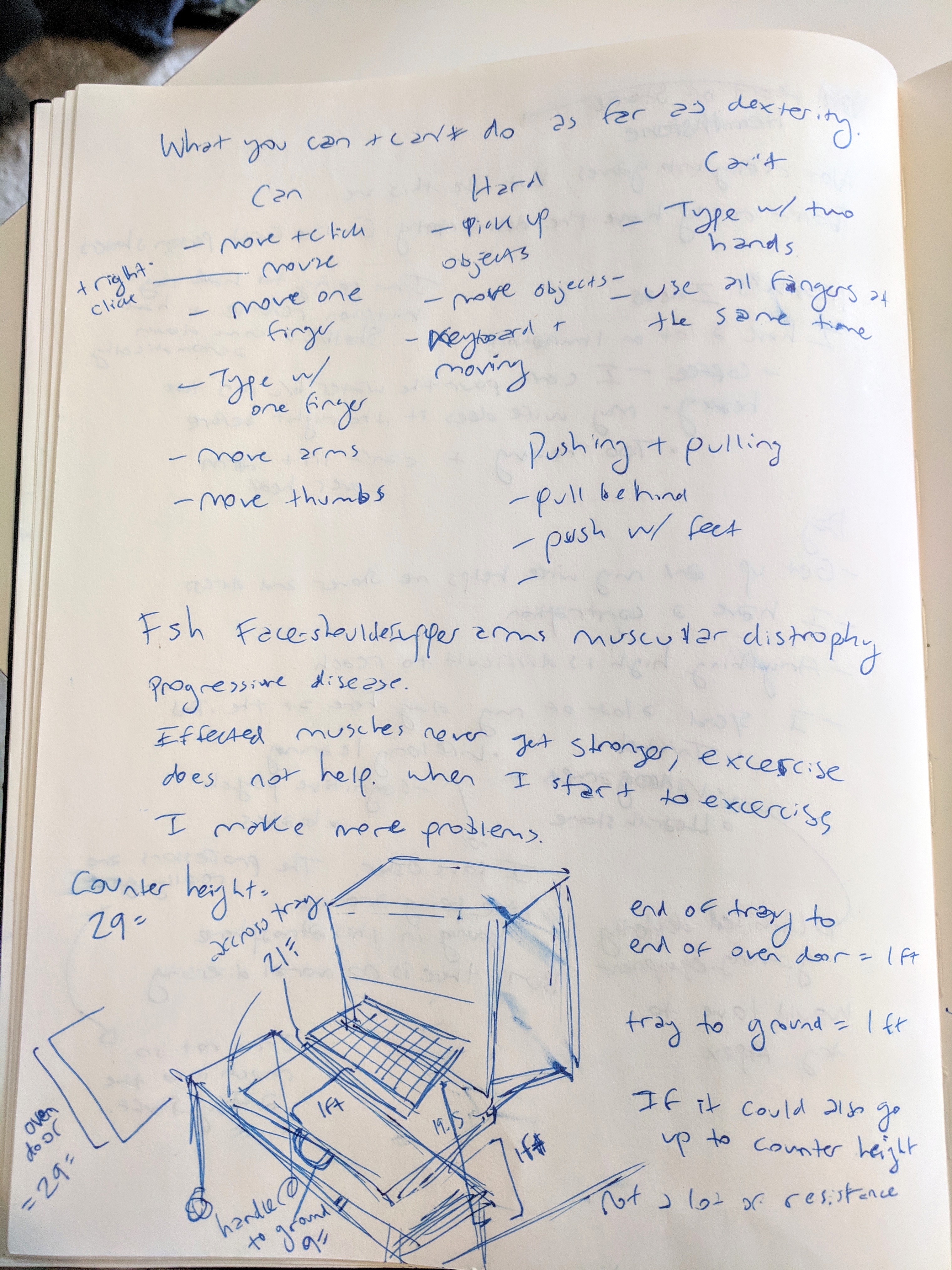
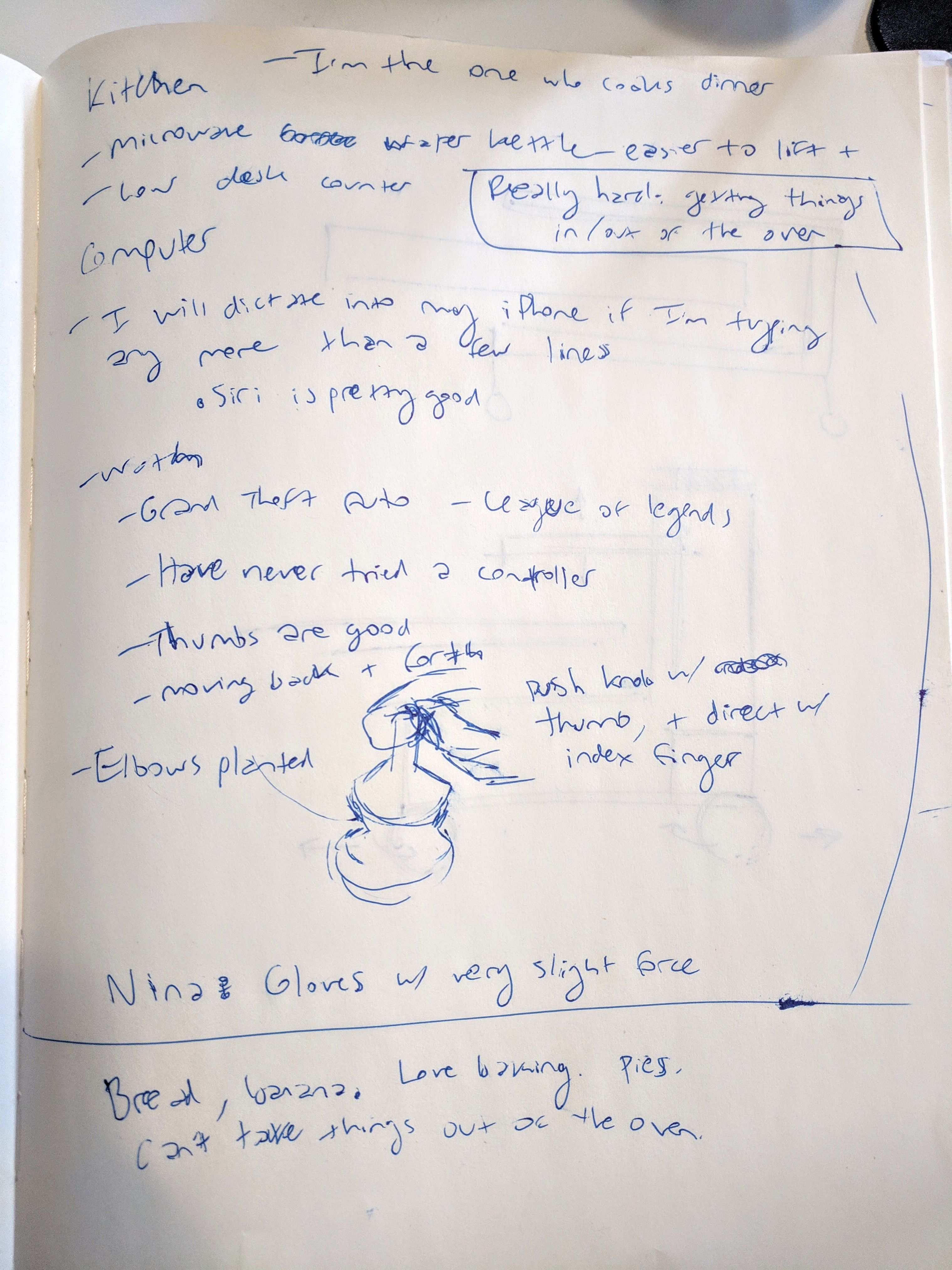
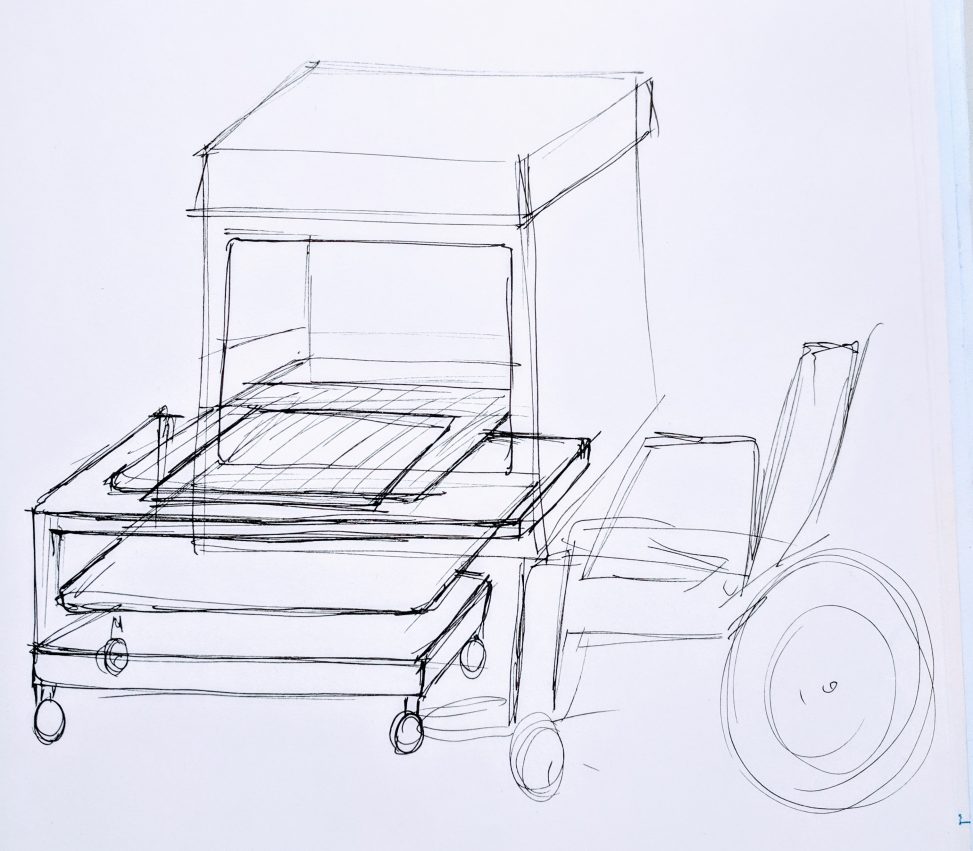
Comments are closed.